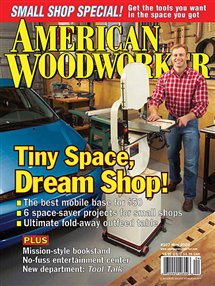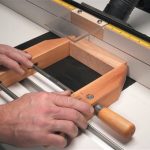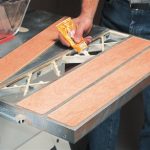We may receive a commission when you use our affiliate links. However, this does not impact our recommendations.
Chair Leg Repair
My kitchen chairs are hardly valuable antiques, so when I broke a rung on one I wanted a strong but simple fix. I drilled out the broken tenon from the mortise and plugged it with a piece of wood. Then I trimmed off the end of the broken tenon on the stretcher and drilled a 1/4-in.-dia. by 1-in.-deep hole into the end. I epoxy glued a 1-3/4-in. piece of threaded rod into this hole. Then I drilled out a corresponding hole into the wood plug and epoxy glued the threaded rod into the wood plug. Epoxy glue is a great gap-filling glue, which means the alignment of the threaded rod doesn’t have to be perfect. This fix may seem a bit rough, but it works, and besides—this chair will never be on “Antiques Roadshow.”
|
This story originally appeared in American Woodworker May 2004, issue #107. |
|
Here are some supplies and tools we find essential in our everyday work around the shop. We may receive a commission from sales referred by our links; however, we have carefully selected these products for their usefulness and quality.











